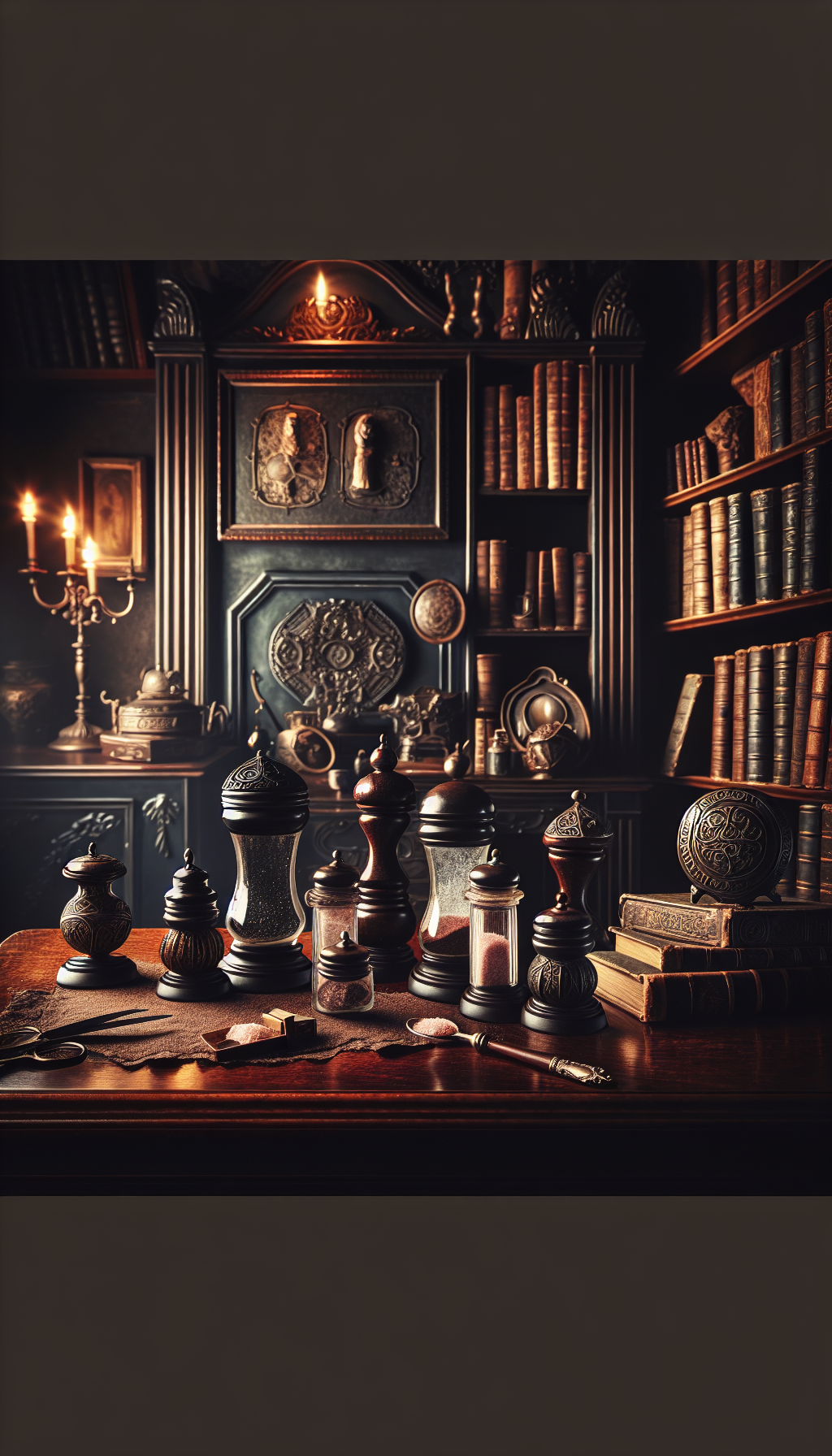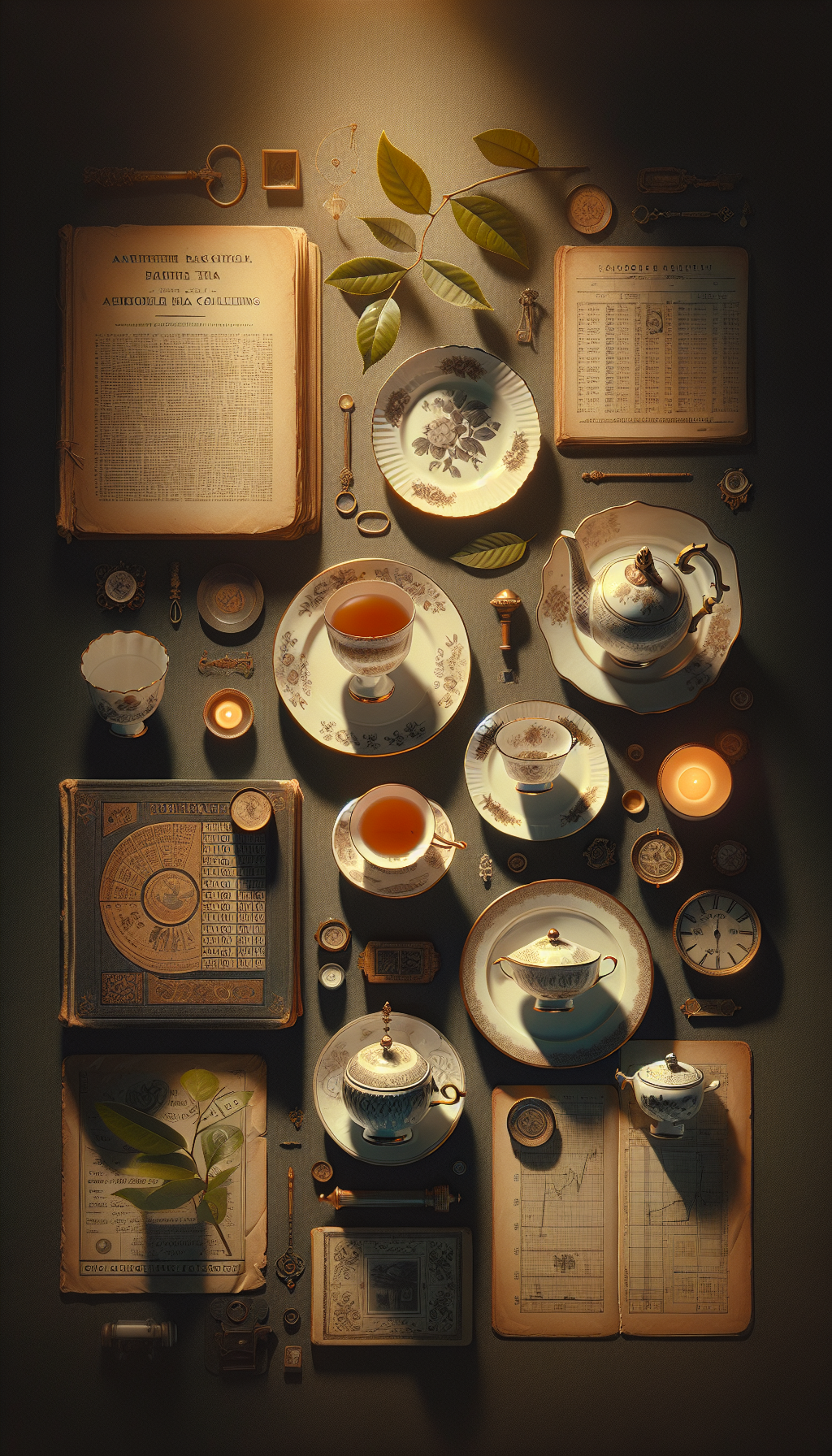Wanli Mark Late Qing Dynasty Republic Period Ceramic Polygonal Tea Jar
Apocryphal-marked porcelain from the turn of the 20th century occupies a fascinating niche: it borrows imperial prestige while revealing the technical fluency and commercial realities of its own time. The “Wanli mark” polygonal tea jar—often a faceted, lidded container with a six-character “Da Ming Wanli Nian Zhi” mark—epitomizes this blend. This guide helps appraisers, dealers, and collectors interpret these jars correctly, separating late Qing and Republic-period production from genuine Ming Wanli wares and contemporary reproductions.
Historical Context: Why a Wanli Mark on a Later Jar?
- The Wanli reign (1573–1620) is celebrated for wucai (five-color) decoration, lively narrative scenes, and export ceramics. Its reign mark carries prestige.
- During the late Qing (c. 1875–1911) into the early Republic (c. 1912–1930s), Jingdezhen kilns revived earlier styles to satisfy both domestic taste and robust export markets. Applying apocryphal marks such as “Da Ming Wanli Nian Zhi” became common and was not necessarily intended to deceive—it signaled stylistic homage and quality alignment.
- Tea commerce and packaging evolved rapidly in the 19th–early 20th centuries. Polygonal tea jars and caddies—easier to pack and stack—were popular for household storage and sometimes for retail presentation. Makers fused practical shapes with fashionable decorative vocabularies.
Key takeaway: a Wanli mark alone does not imply Ming date. On late Qing/Republic examples, the mark is a stylistic reference, often executed differently than Ming originals in calligraphy, placement, and pigment.
Form and Function: Understanding the Polygonal Tea Jar
Polygonal or faceted jars from this period typically share these traits:
- Plan view: hexagonal or octagonal; occasionally twelve-lobed. Facets are straight, with noticeable edges.
- Lid types:
- Porcelain flange cover (sits within a recessed mouth).
- Simple cap cover with shallow flange.
- Later replacements in wood, cork, or metal (pewter or white metal), especially on export-used caddies.
- Mouth and shoulder: The shoulder can be gently sloped; mouths often feature a ledge to accept a gasket or paper seal. Some jars show wax residue or paper fibers from historical sealing.
- Base and foot: A neatly cut, unglazed footrim is typical, with tool marks. Interior base may show pooled glaze at corners due to capillary action in faceted geometry.
- Potting: Weight is moderate; walls tend to be relatively even but show slight thickening at the corners. Mold-assisted forming was common; faint vertical mold seams can sometimes be felt inside.
Functionally, these jars were meant to store fragrant leaf tea away from moisture and light. Faceted profiles maximize packing efficiency and reduce rolling risk. Many were sold domestically; others were export goods for Southeast Asia, Europe, or North America.
Materials and Decoration: Reading the Surface
While genuine Wanli-period jars (Ming) predominantly feature wucai with underglaze blue plus overglaze iron-red, green, and yellow, late Qing–Republic polygonal jars often display a broader palette and a different feel.
Common bodies and glazes:
- Porcelain body: Fine-grained, bright white to slightly bluish-white; under light, Republic porcelain often appears cleaner and more homogeneous than Ming bodies, which can have a greyer tone and scattered iron specks.
- Glaze behavior on facets:
- Thinning on ridge edges (you may see a slightly drier glaze line on the arrises).
- Pooling in corner junctions inside the jar and at the base.
- Minute pinholes or “orange peel” texturing may appear on thicker glaze pools.
Decoration patterns:
- Famille rose (fencai): A Republic hallmark—opaque pinks, lemon yellows, apple greens, with soft shading and fine black or iron-red outlines. Enamel is glassy and sometimes slightly raised.
- Revival wucai: Later interpretations of Wanli wucai, often cleaner and more regular, with modern cobalt and brighter overglaze greens.
- Gilt accents: Thin gilding on rims and motif highlights; look for even, factory-applied lines. Honest wear appears on high points first.
- Motifs: Floral scrolls, peony and chrysanthemum sprays, bats and peaches (longevity), stylized archaistic borders, and sometimes shop marks or auspicious inscriptions on panels.
Mark types and features:
- Six-character “大明萬曆年製” (Da Ming Wanli Nian Zhi) in underglaze blue, typically within a double circle on the base. Republic calligraphy tends to be neat, even, and centrally placed; characters can be more regularized than Ming examples.
- Alternatives: Four-character “萬曆年製,” or an iron-red overglaze mark. Republic iron-red marks are common for Qing reign titles but less typical for Wanli; underglaze blue is more usual for Wanli homage marks.
- Cobalt: Modern synthetic cobalt (late Qing/Republic) yields a clean, even blue; Ming cobalt often shows “heaping and piling” with dark spots and haloing.
Foot and base diagnostics:
- Footrim: Knife-trimmed with concentric tool lines; the clay at the cut edge is usually pale buff to white on porcelain. Artificial abrasion often leaves a uniform sanded look; genuine wear is irregular and follows contact points.
- Spur and grit: Unlike some Ming wares, Republic jars often have cleaner, less gritty bases; kiln grit adhesion, if present, is minimal and fine.
Appraisal and Dating Methodology
To distinguish late Qing from early Republic—and both from Ming—consider these structured observations:
- Potting and proportions
- Late Qing examples may be slightly heavier with thicker walls; early Republic jars often show refined, even walls, crisper edges, and assured symmetry from improved forming methods.
- Check the interior corners. Mold seams and glaze pooling support a late 19th–early 20th century date.
- Enamel palette and application
- Famille rose with pastel pinks and opaque whites points to 19th century onward. Wanli-era fencai does not exist; famille rose emerges in the early 18th century. Thus, famille rose on a “Wanli-marked” jar signals post-1700 and likely late Qing/Republic.
- Brushwork regularity and factory neatness often increase into the Republic period. Look for finely ruled borders and standardized florals.
- Blue underglaze and mark
- Even, bright blue with little haloing suggests late Qing/Republic. The reign mark’s calligraphy: well-centered, uniform stroke weight, and clean double circle lines also skew later.
- Compare the six characters’ balance: Ming marks can be slightly uneven or vary in spacing; later apocryphal marks can appear almost printed in their regularity.
- Glaze and body
- Later glaze is typically very clear and glassy. Under magnification, Republic enamels show a smooth, slightly domed surface with tiny air bubbles; Ming overglaze can be more matte or variable.
- Wear patterns
- Natural wear favors rim edges, lid flanges, and facet arrises. Tea jars that were used show interior staining and abrasion where scoops contacted the walls. Uniform, overall abrasion or tea-colored “dirt” concentrated in recesses is a red flag for artificial aging.
- UV and restoration checks
- Ultraviolet light can reveal later overpainting (rests fluoresce differently). Republic enamels can fluoresce mildly, but repaired areas often glow distinctively.
- Tap test: a clear, sustained ring indicates sound porcelain; a dull thud can indicate a crack, heavy restoration, or a thick overpainted section.
Condition, Conservation, and Value Considerations
Typical condition issues:
- Rim and corner chips: Facet edges are vulnerable. Small nibbles are common and less value-destructive than full-length corner losses.
- Hairlines: Radiating from the rim or vertical along a facet. Inspect both interior and exterior; hairlines can be neatly overpainted.
- Enamel and gilt wear: Highpoint loss on florals and border lines; gilding typically thins first at the mouth and shoulder.
- Staining: Interior tea tannin staining is normal; black manganese “age spots” within the glaze may also appear; these are intrinsic and not removable.
Restoration indicators:
- Completely uniform gloss over enamel and porcelain—especially bridging wear—suggests a consolidated overvarnish.
- Color match lines and unnatural masking of tool marks point to fills. Edges that feel “soft” to the fingernail can be resin.
- Solvent testing (by professionals) can differentiate old enamel from modern acrylic binders.
Value drivers:
- Quality of painting and palette harmony.
- Crispness of form and lid completeness (original porcelain cover is a plus).
- Honest, light wear versus heavy restoration.
- Provenance: old collection labels, period shop stickers, or export customs marks can support dating.
- Market trends: Attractive famille rose jars with clean marks and minimal damage typically command stronger prices. Heavily restored or newly made reproductions lag significantly.
Indicative ranges vary by region and sale context, but as a general guide:
- Everyday late Qing/early Republic polygonal jars with decent painting and minor wear often trade in the low hundreds.
- Finely painted, larger, well-preserved examples with original lids may achieve mid to high hundreds or more.
- Exceptional workshop quality, documented provenance, or rare motifs can move prices higher. Genuine Ming Wanli jars (of different form and decoration) exist on a vastly different price tier and should not be conflated.
Authentication Red Flags and Modern Reproductions
- Overly white, chalky porcelain with sprayed-on enamels and perfectly even “antique” patina is suspect.
- Sandpapered footrims that feel uniformly smooth and show even tan staining in grooves. Authentic wear is uneven and localized.
- “Tea staining” concentrated in decorative recesses, with clean high points: often applied, not earned.
- Transfer-printed outlines under enamels: tiny dot matrices or mechanically perfect repeats reveal modern techniques.
- Sharp, laser-precise reign marks, especially if they sit oddly in relation to the foot, or use incorrect calligraphy for Wanli-era style.
- Artificially induced crazing patterns that run through enamel and glaze uniformly; true age-related craze is irregular and often absent on high-fired Qing/Republic porcelain.
If in doubt, seek comparative handling of known-period examples and consider professional lab tests (e.g., pigment analysis, thermoluminescence on related bodies where applicable—though TL is not ideal for high-fired porcelain and is more useful on earthenware).
Practical Appraisal Checklist
- Form: Confirm hexagonal/octagonal plan; check for crisp edges, even facets, and a properly fitting lid.
- Mark: Six-character “大明萬曆年製” within double circle in underglaze blue is common; evaluate calligraphy regularity and cobalt tonality.
- Palette: Famille rose or bright polychrome = post-1700; neat, pastel-heavy palette leans late Qing/Republic.
- Foot and base: Knife-trimmed footrim with concentric tool lines; natural, irregular wear; minimal kiln grit.
- Glaze behavior: Thinning on edges, pooling in corners; pinholes acceptable; uniform spray-like gloss is suspect.
- Condition: Inspect rim, facet corners, and interior for chips, hairlines, and staining; test for overpaint under UV.
- Sound and weight: Even walls, moderate weight; a clear ring is positive; a thud suggests issues.
- Provenance: Note labels, shop marks, and period seals; photograph all marks and features for record.
FAQ
Q1: What does a “Wanli mark” mean on a late Qing or Republic jar? A: It’s apocryphal—an homage to the Ming Wanli reign. It indicates stylistic inspiration, not period authenticity. Dating must be based on body, glaze, decoration, and workmanship.
Q2: How can I distinguish late Qing from Republic period on these jars? A: Republic pieces often show very regular potting, clean bright glazes, refined famille rose palettes, and neat, centered marks. Late Qing can be slightly heavier with more variably applied enamels. The differences are subtle; consider a combination of form, palette, and mark style.
Q3: Does the mark affect value? A: Yes and no. A clear, well-executed apocryphal mark can enhance desirability within its category, but it does not elevate the piece to Ming value. Quality of painting, condition, and overall craftsmanship matter more.
Q4: My jar has interior staining and an old paper seal residue. Is that a problem? A: No—these are consistent with use and can support authenticity. Remove only if necessary and do so conservatively to avoid damaging the glaze or leaving solvent marks.
Q5: What lid is “correct” for a polygonal tea jar? A: An original porcelain flange cover is ideal. Period replacements in wood, cork, or metal were common in use; they don’t disqualify a piece but may modestly reduce value compared to an original porcelain lid.
By approaching the “Wanli mark” polygonal tea jar as a product of late Qing to Republic ingenuity—rather than a Ming survivor—you can appraise more accurately, avoid costly mistakes, and appreciate the artistry and history embedded in these practical, beautiful containers.




